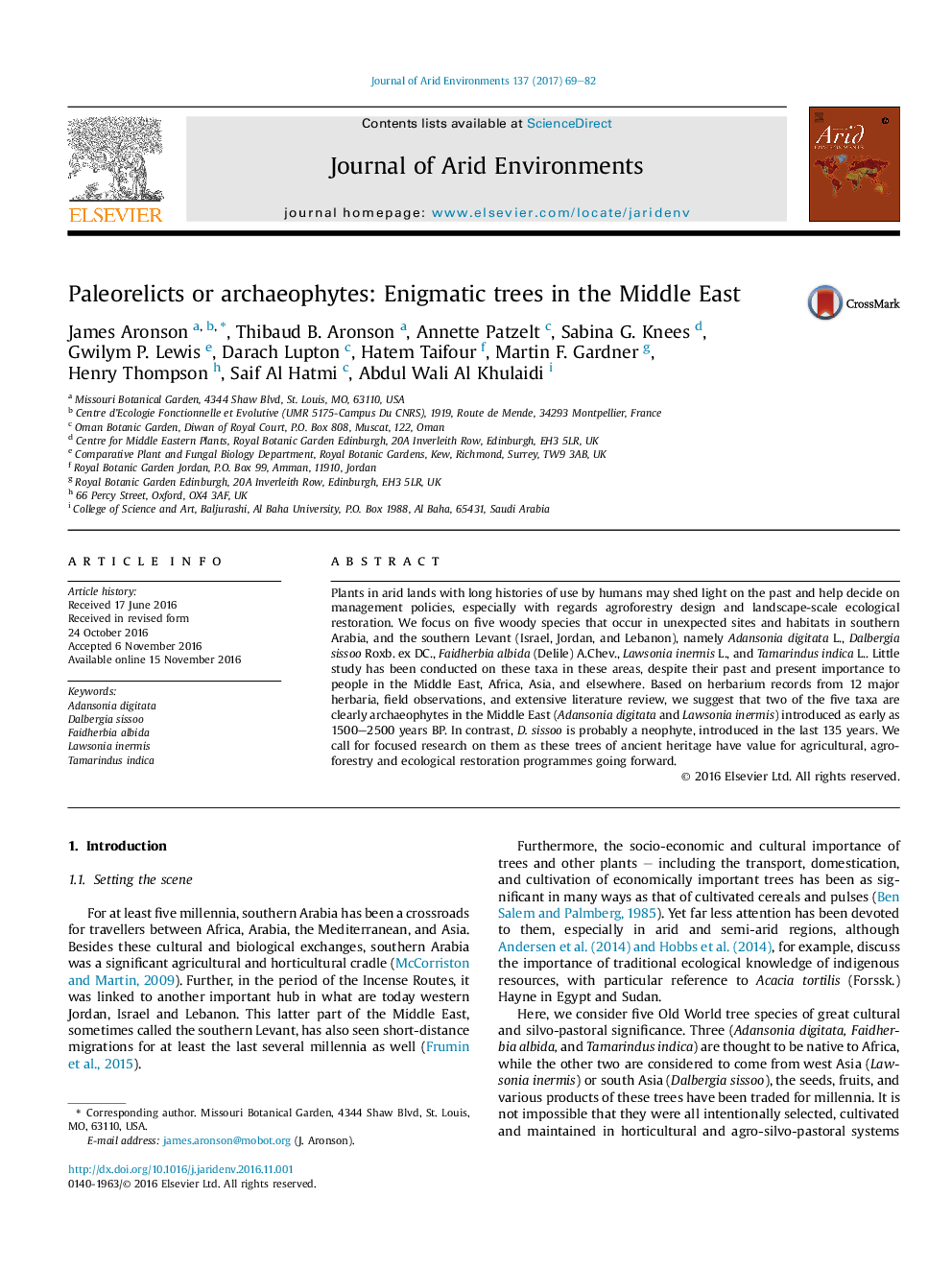| Article ID | Journal | Published Year | Pages | File Type |
|---|---|---|---|---|
| 5744415 | Journal of Arid Environments | 2017 | 14 Pages |
â¢Several tree species in southern Arabia and the southern Levant show enigmatic distributions.â¢Herbarium studies and field research suggest anthropogenic dispersal.â¢We conclude that Adansonia digitata and Lawsonia inermis are archaeophytes in the study area; Dalbergia sissoo a neophyte.â¢Faidherbia albida and Tamarindus indica are possibly both paleorelicts and archaeophytes.â¢Relevance for agroforestry and ecological restoration is discussed.
Plants in arid lands with long histories of use by humans may shed light on the past and help decide on management policies, especially with regards agroforestry design and landscape-scale ecological restoration. We focus on five woody species that occur in unexpected sites and habitats in southern Arabia, and the southern Levant (Israel, Jordan, and Lebanon), namely Adansonia digitata L., Dalbergia sissoo Roxb. ex DC., Faidherbia albida (Delile) A.Chev., Lawsonia inermis L., and Tamarindus indica L.. Little study has been conducted on these taxa in these areas, despite their past and present importance to people in the Middle East, Africa, Asia, and elsewhere. Based on herbarium records from 12 major herbaria, field observations, and extensive literature review, we suggest that two of the five taxa are clearly archaeophytes in the Middle East (Adansonia digitata and Lawsonia inermis) introduced as early as 1500-2500 years BP. In contrast, D. sissoo is probably a neophyte, introduced in the last 135 years. We call for focused research on them as these trees of ancient heritage have value for agricultural, agroforestry and ecological restoration programmes going forward.
